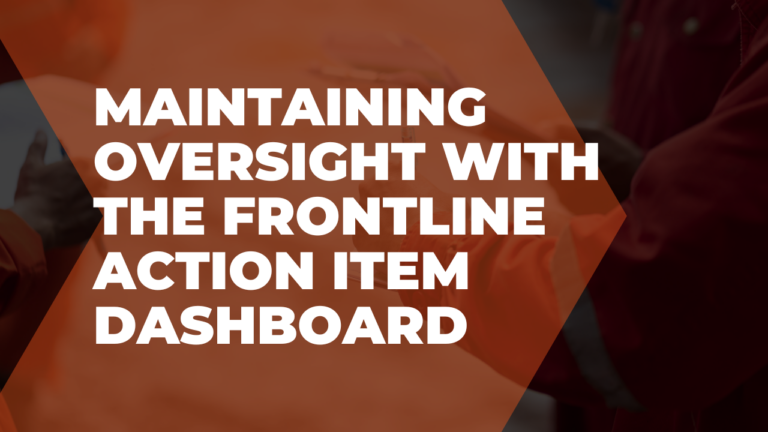There’s no exact recipe for how to start a safety program, given the variations that exist across industries. Each company has its own unique safety challenges and regulatory requirements that determine the scope and focus of its EHS program. Below is a basic framework you can use to start a safety program that’s both effective and manageable.
Basic components of a safety program
These are some of the things most (if not all) safety programs need to be effective:
- Dedicated EHS team and/or safety committee
- Compliance with environmental, health, and safety requirements
- Comprehensive safety policies and procedures
- Employee training program
- Standardized documentation system
- Participation of all employees (regardless of their roles)
Safety programs aren’t one-size-fits-all, even within the same company. If you have multiple locations, it’s likely that each site will have unique challenges and needs.
Steps to start a safety program
The best safety programs are the ones that are tailored to your workforce, processes, company goals, and more. Are your workers likely to resist safety policies? Do your processes fall under strict regulations? What kind of resources do you have at your disposal?
Answering these (and similar) questions is a great way to anticipate the variables that might affect your safety performance. When you’re ready, you can follow these basic steps to start a safety program at your company or facility:
- Determining the relevant regulatory requirements of your processes
- Outlining the goals, objectives, and scope of the program
- Establishing individual roles and responsibilities within the program
- Developing safety policies, procedures, and a training program
- Implementing safety protocols
- Creating a method for safety program documentation, analysis, and improvement
Get support and buy-in
For your safety program to succeed, you’ll need to get support and buy-in at all levels of the company. This includes everyone from your frontline workers to the executive team. Safety is, after all, the responsibility of each person.
Your safety program must be integral to your overall business strategy to be successful. Before you implement any new policies or procedures, it’s important to consult with different stakeholders. That way, you can prevent safety initiatives that negatively impact productivity, quality, employee satisfaction, or any other area of performance.
EHS departments can often struggle to advocate for the resources to improve their processes. From EHS software to higher quality PPE, executive leaders must understand the value of investing in safety. Once you have a clear outline of the program you want to implement, share it with your team and make sure they’re onboard. This will benefit you once you try to get the program going.
Important considerations to make
Once you start a safety program, there’s more work to do. Equipment, personnel, regulatory requirements, environmental concerns—these variables are constantly changing.
For your strategy to remain effective, you must account for these variables and adjust your practices. Here are some important considerations to make regarding the longevity of your safety program.
EHS documentation
Documentation plays a huge role in running a successful EHS program. Poor records management practices can negatively impact both internal and external compliance.
When you’re first starting a safety program, keep documentation simple. Use an intuitive syntax for naming files and keep everything stored centrally, so it’s easy for your team to find.
The best way to do this is with action tracking software, which allows you to log tasks and attach documentation. But if your company is too small for software yet, a simple spreadsheet or shared file system will work just fine.
The most important thing is that you keep all your records organized for both internal and external compliance purposes.
Program oversight
It’s easy to lose control over a safety program without proper visibility. How will you maintain oversight of important KPIs, initiatives, and other safety-related projects?
When you track your safety program using pen and paper methods, it’s hard to connect all the dots. Following a paper trail is time-consuming and almost impossible unless you have very rigid documentation practices. For that reason, many companies rely on EHS software or Excel spreadsheets to track EHS KPIs and manage action items.
It’s important to think about how you’re going to maintain oversight before you start a safety program. The longer you go without implementing a tracking system, the harder it will be down the line. Putting something in place, even if it’s the most basic spreadsheet or tracking document, is better than nothing as long as it’s scalable.
Internal compliance auditing
You also need to have an internal audit process in place to ensure the program’s longevity. One best practice is to schedule your audits at regular intervals, so they don’t slip through the cracks. During an audit, ask questions that help you uncover areas for improvement, including (but not limited to):
- What is the state of our documentation? Is everything organized and easy to review?
- Do employees follow the site safety policies and procedures?
- How involved are department leaders in enforcing safety guidelines?
- Do employees regularly voice safety concerns or share ideas for improvement?
- How is the EHS team’s workload? Are they struggling to keep up with tasks?
Try to focus more on your team’s experience of site safety than the metrics. For example, if you haven’t had any incidents but your EHS department is disorganized, it’s only a matter of time before they miss something big. Provide the resources to correct any issues with the safety program before there’s a major operational failure or safety incident.
Keeping a proactive approach is the only way to ensure the longevity of your safety program. By seeking out issues, as opposed to waiting for them to appear, you can better control and eliminate them. Over time, these efforts compound and set your team up to focus on continuous improvement in other areas of performance.
Other posts you might like…
No posts

